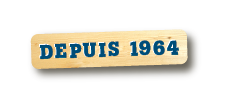MOUNTAIN CODE OF CONDUCT
Introduction
Before using the trails, the skier or snowboarder must get acquainted with the mountain's characteristics in order to make it easier for him or her to find his way around.
He or she can obtain this information on the wall display located between the chalet and the location where you access the trails. This diagram of the slopes is also available in pocket-size at the ticket Office.
The skier or the snowboarder must use the trails that correspond to his or her skill level.
Trails are classified based on the following degree of difficulty: Easy, Difficult, Very difficult and Extreme. Take note that there can be slight differences from a ski hill to the next, in the evaluation of the degree of difficulty of the trails. For this reason, it is preferable to use caution when exploring the trails of a ski hill we visit for the first time.
Snow Park: Be careful!
Snow parks are set up to hold structures, lay outs and designs that are intended for jumps and other tricks and figures, for example, half-moons and take-offs. These areas are delimited and their entrances are well marked.
The mountain Code of Conduct also applies to a snow park along with the other particular rules of conduct that can be posted at its entrance. The operator is not required to indicate the degree of difficulty of the park or of each installation or layouts and design. The slider must use caution, get acquainted with the place and use the designs corres
The Mountain Code of Conduct
The Mountain Code of Conduct sets out the rules that aid in accident prevention and help make the trails an enjoyable shared area for everyone on the mountain. The Code also applies inside snow parks.
The patrollers have the authority to intervene if any part of the Code or any other rule the ski centre has put in place has been broken. For these reasons, it is very important that each person on the mountain show consideration for other users and respect the Code and these rules. Your safety and the safety or those around you is at stake.
1. Keep it under control!
Le glisseur est responsable de ses manoeuvres. Il doit donc choisir des pistes correspondant à son niveau d'habileté et demeurer vigilant de façon à pouvoir réagir rapidement pour éviter les collisions.
2. On trails, yield to those below!
It's difficult for people part-way downhill to see what's going on behind them - after all, we don't have eyes in the back of our heads! On the slopes, one has a clearer view from above; a person in an uphill position relative to other users is responsible for maneuvering to avoid them.
3. Don't block the trail!
To avoid placing oneself needlessly in danger, it is preferable to stop only on the side of a trail, out of the way.
4. At intersections, yield to those above!
Just like motorists who must yield at intersections, mountain users must avoid cutting off another person who has already started a descent.
5. Give the ski patrol a hand!
Whether or not mountain users were involved in an accident, they must help a person that is injured. They should also assist members of the ski patrol in gathering accident-related information. Mountain users can also help prevent accidents by notifying ski patrollers of behaviour that goes against the rules of the Code.
6. Hold on your equipment!
Mountain users must use safety mechanisms that, in the event of a fall, prevent their equipment from getting away from them and injuring another person. In the case of skis, this would consist of the braking system built into the bindings; for snowboards, one uses a leash.
7. No alcohol or drugs!
These substances weaken mental capacities and affect people's ability to react rapidly and remain in control of their movements. Alcohol and drugs don't go with safety on the slopes!
8. Respect signs!
The mountain operator posts signs that provide essential information for finding one's way safely around the mountain. Consequently, it is important to read and obey these signs. Use only authorized trails.






 0
0  0
0 QUAD CHAIR
QUAD CHAIR MAGIC CARP.
MAGIC CARP.


